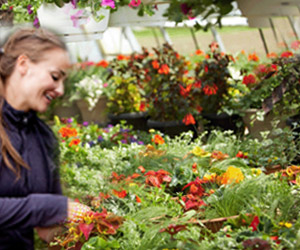Living in the context of rural poverty affects the ability of mothers to utilize family-based nature activities to promote their families' health.

‘Outdoor activities like walking or cycling in a park promote health and well-being. But low-income mothers from rural communities feel that they lack access to greener spaces.’





In interviews from an initial project referred to as "Rural Families Speak about Health," low-income mothers from rural communities in 11 states were asked how they and their children stay healthy, as well as what resources were available in their communities to support health. Almost every mom gave the same response: participating in outdoor activities. Researchers at the University of Illinois, who study families and the benefits of participating in family-based nature activities, were interested in these responses. Using data from the rural families study, Dina Izenstark, a doctoral student in family studies at the U of I and colleagues conducted a follow-up study to further explore how and why moms use the natural environment to promote health for themselves and their families. The researchers also wanted to learn what health benefits they experienced.
The new study, published in the Journal of Leisure Research, also examines how living in the context of rural poverty affects the ability of mothers to utilize family-based nature activities to promote their families' health. The mothers interviewed for the study had incomes at or below 185 percent of the federal poverty level, lived in selected rural counties, and had at least one child under the age of 13. Their family structure/co-parenting situation was not considered.
"During the interviews, moms weren't specifically asked about their experiences in nature," Izenstark says. "They were asked, 'how do you and your family stay healthy?' Yet almost every single mom in the study, on their own, said they use nature to promote their health.
"When we started to dig deeper, we noticed that because they didn't always have the financial resources to support their health in other ways, access to natural spaces in their community provided them the opportunity," she adds.
Advertisement
U of I professor of family studies Ramona Oswald is a co-author. She worked on the initial rural families study, and says this study shows that community investment is important in making resources accessible.
Advertisement
"It speaks to the importance of that infrastructure for families on low incomes who are not able to drive to the next community or pay for a gym membership, or something else that might be available for people who have more money," Oswald says.
The most common activity mentioned by moms was walking in nature. It was something the whole family could do together, regardless of the kids' ages or their financial constraints. After walking came going to the park for exercise, picnics, sports, or free movies.
Izenstark points out how even routine, day-to-day activities in nature can be sources of bonding for families. Many moms mentioned the importance of walking the family dog together. Other examples included picking blackberries every summer, family camping trips, and staying on the beach while visiting extended family.
The moms cited reasons such as wanting to be a good role model, limit television exposure, and promote healthy physical development as motivators for participating in outdoor activities with their kids.
"Moms described how getting outside not only helped them improve their physical health and motivation to exercise or lose weight, but once outside, the moms experienced psychological health benefits as well," Izenstark says. Social health benefits are also important. "The moms said their children don't always get to see other children [living in a rural area], so it's really important to go to the park with friends or extended family, for example.
"Although they didn't always say they were going outside to promote their family relationships, the data suggested that being outside was a great place for families to laugh, bond, and create memories -- these social health benefits influenced their family relationships," she adds.
Oswald and Izenstark both hope park and recreation practitioners, as well as other community officials, will see the importance of resource access, especially in built natural environments such as parks and playscapes for low-income families in rural areas. Beyond just providing programs, Oswald wants practitioners to meet low-income families where they are to spread the message.
"The moms in this study know about health and what to do to be healthy," Oswald says. "It's not a lack of education. It has to do with barriers and access to resources. Especially in rural communities, regardless of income, you struggle with distance between people and resources. If families with low incomes in rural communities are going to go, maybe food pantries, then that's a good place to hang a flyer that says 'get out with your family and have a picnic.' Encourage them to take the next step, framing it in a way that is gratifying rather than punishing or grueling. These moms know, they just struggle with how to make it happen," she says.
Source-Eurekalert









